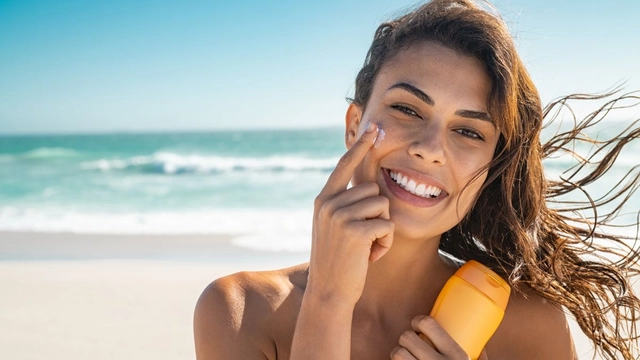- By Prerna Targhotra
- Fri, 07 Jun 2024 05:53 PM (IST)
- Source:JND
Sunscreen For Pregnant Women: Sunscreen is vital for protecting skin from harmful UV rays, but some sunscreens contain chemicals that can be absorbed through the skin and potentially affect the baby. Pregnant women should be aware of the ingredients in the sunscreen to make informed choices about their sunscreen products.
In a conversation with Jagran English, Dr Blossom Kochhar - Pioneer of Aromatherapy and Beauty and Wellness expert explained whether expecting mothers should use sunscreen or not.
Should Pregnant Women Use Sunscreen?
According to Dr Kochhar, the safest option for any pregnant woman is to use mineral sunscreens with natural ingredients like zinc oxide and titanium oxide. These minerals sit on top of the skin and physically block UV rays without being absorbed making them safer for use during pregnancy.
Look for a broad-spectrum sunscreen with at least SPF 30 which means it protects against both UVA and UVB rays to ensure adequate protection. Try to opt for sunscreens that are fragrance-free and hypoallergenic to minimise the risk of any skin irritation.
ALSO READ: 5 Side Effects Of Not Wearing Sunscreen Everyday
Ingredients To Avoid In Sunscreens
Oxybenzone: It is the most common ingredient seen in chemicals. It can penetrate the skin and may have hormonal effects. So, it is better to avoid this ingredient during pregnancy.
Homosalate: Avoid homosalate since it can increase the skin’s capability to absorb different chemicals. It is absorbed by the outer layer of skin and its ability to facilitate skin absorption can leave your skin more vulnerable to absorbing harmful pesticides and other toxic chemicals.
Octocrylene: Octocrylene is quickly absorbed into the skin and trace amounts of it can be found in the bloodstream. It can lead to the production of free radicals in the body. It may impact your baby, so it is better not to use sunscreens that have octocrylene.
Tips For Safe Sun Protection During Pregnancy
Reapply sunscreen every two hours, or more frequently when swimming or sweating.
Use additional protective measures while stepping out in the sun such as wearing a sun hat, a pair of sunglasses, loose comfortable natural fabrics and so on.
Avoid direct sun exposure, especially between 10 AM to 4 PM and seek shade or use an umbrella while stepping out in case of any unavoidable circumstances.
Like I always say before using a sunscreen patch test on a small area of skin to check any reaction that it may cause.
ALSO READ: National Sunscreen Day 2024: Which SPF Is Best For Indian Skin? Know Right Way To Apply Sunscreen

